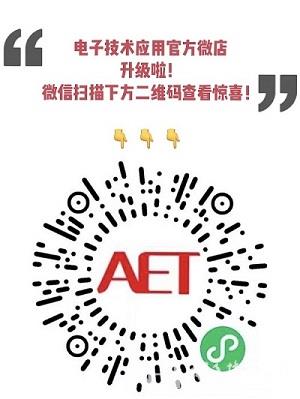基于DBN-BP深度算法的热轧板带横断面预测
2022年电子技术应用第11期
高山凤,刘美红,范秋霞
山西大学 自动化与软件学院,山西 太原030006
摘要: 随着各工业领域的快速发展,市场对薄规格、高强度板带产品的需求快速增加。而热轧板带横断面形状是热轧板带产品质量的主要评价指标。基于数据挖掘技术,对轧机数据库中的数据进行分析与处理,其中数据挖掘技术采用深度置信网络(Deep Belief Neural,DBN)和BP(Back Propagation)算法相结合,构建板带横向厚度分布的预测模型。DBN-BP算法由多个限制玻尔兹曼网络(Restricted Botlzmann Machine,RBM)逐层堆叠而成,并使用无监督的逐层训练的方式得到网络的权值矩阵和偏置供BP算法使用,而BP算法通过误差反向传播的方式对整个网络进行微调。该方法克服了BP算法因随机初始化权值参数而陷入局部最优和训练时间长的缺点。通过与BP算法相比较可知,采用DBN-BP方法预测终轧道次稳定轧制时板带中点厚度误差在±5.6 μm范围内的概率可达95%;而BP算法的预测误差范围为±11 μm。并且通过对板带横断面形状的预测结果分析可知,相比于BP算法,DBN-BP深度学习方法对于板带边部厚度的预测更具有优势。
中图分类号: TP183
文献标识码: ADOI:10.16157/j.issn.0258-7998.223210
中文引用格式: 高山凤,刘美红,范秋霞. 基于DBN-BP深度算法的热轧板带横断面预测[J].电子技术应用,2022,48(11):46-50,56.
英文引用格式: Gao Shanfeng,Liu Meihong,Fan Qiuxia. Cross sectional shape prediction of hot rolled strip based on DBN-BP deep neural network[J]. Application of Electronic Technique,2022,48(11):46-50,56.
文献标识码: ADOI:10.16157/j.issn.0258-7998.223210
中文引用格式: 高山凤,刘美红,范秋霞. 基于DBN-BP深度算法的热轧板带横断面预测[J].电子技术应用,2022,48(11):46-50,56.
英文引用格式: Gao Shanfeng,Liu Meihong,Fan Qiuxia. Cross sectional shape prediction of hot rolled strip based on DBN-BP deep neural network[J]. Application of Electronic Technique,2022,48(11):46-50,56.
Cross sectional shape prediction of hot rolled strip based on DBN-BP deep neural network
Gao Shanfeng,Liu Meihong,Fan Qiuxia
School of Automation and Software Engineering,Shanxi University,Taiyuan 030006,China
Abstract: With the rapid development of various industrial fields, the market demand for thin specifications, high strength strip products increases rapidly. The cross-section shape of hot rolled strip is the main evaluation index of hot rolled strip product quality. Based on data mining technology, the data in the mill database are analyzed and processed. The data mining technology combines deep belief neural network(DBN) and back propagation(BP) neural network algorithms to construct a prediction model of strip thickness distribution. The DBN-BP algorithm is composed of several restricted Botlzmann machines(RBM) stacked layer by layer, and the weight matrix and bias of the network are obtained by unsupervised layer-by-layer training method for the BP network, while the BP neural network fine-tunes the whole network by means of error back propagation. This method overcomes the disadvantages of BP network falling into local optimum due to random initialization of weight parameters and long training time. Compared with the BP algorithm, the probability of predicting the midpoint thickness error is within ±5.6 μm by the DBN-BP method is 95%, while the prediction error of BP algorithm is within ±11 μm. Through the analysis of the prediction results of the cross-section shape of the strip, it can be seen that the DBN-BP deep learning method has more advantages than the BP algorithm in predicting the edge thickness of the strip.
Key words : hot rolling;deep learning;strip thickness prediction
0 引言
在钢铁及有色金属行业,轧制是目前最重要的板带材产品成材工序之一。随着市场对热轧产品以及冷轧产品质量要求的不断提高,热轧板带横断面形状越来越受到重视,其主要的评价指标有凸度、楔形、边降和局部高点等。同时热轧板带是冷轧板带的材料来源,现有研究表明热轧板带对冷轧板形的质量有着重要影响[1]。热轧工序常常需要根据冷轧需求控制板形,板形的质量控制已从冷轧的控制延伸到轧制全流程控制。
由于轧制过程中变形区金属发生三维塑性变形,存在明显的金属横向流动现象[2],造成板带横断面形状难以准确预测。目前对板带横断面形状的研究主要是集中在板带凸度和边部减薄量的研究,研究方法有数学模型[3-5]、有限元[6-10]、轧机设备研发[11]和机器学习算法[12-14]等。虽然板带凸度能够用来粗略说明轧机对轧件横断面的改变能力,并可用来分析轧机对于板带边浪和中浪的控制能力,但对于具有复杂断面形状变化的轧件是无法单独使用板带凸度进行板形评价的[3]。此外,生产中为了保证板带的边部质量,往往必须将板带边部减薄部分裁切掉,而减小板带切边量是降本增效有效的方法[15-17]。
本文详细内容请下载:https://www.chinaaet.com/resource/share/2000005003。
作者信息:
高山凤,刘美红,范秋霞
(山西大学 自动化与软件学院,山西 太原030006)

此内容为AET网站原创,未经授权禁止转载。


